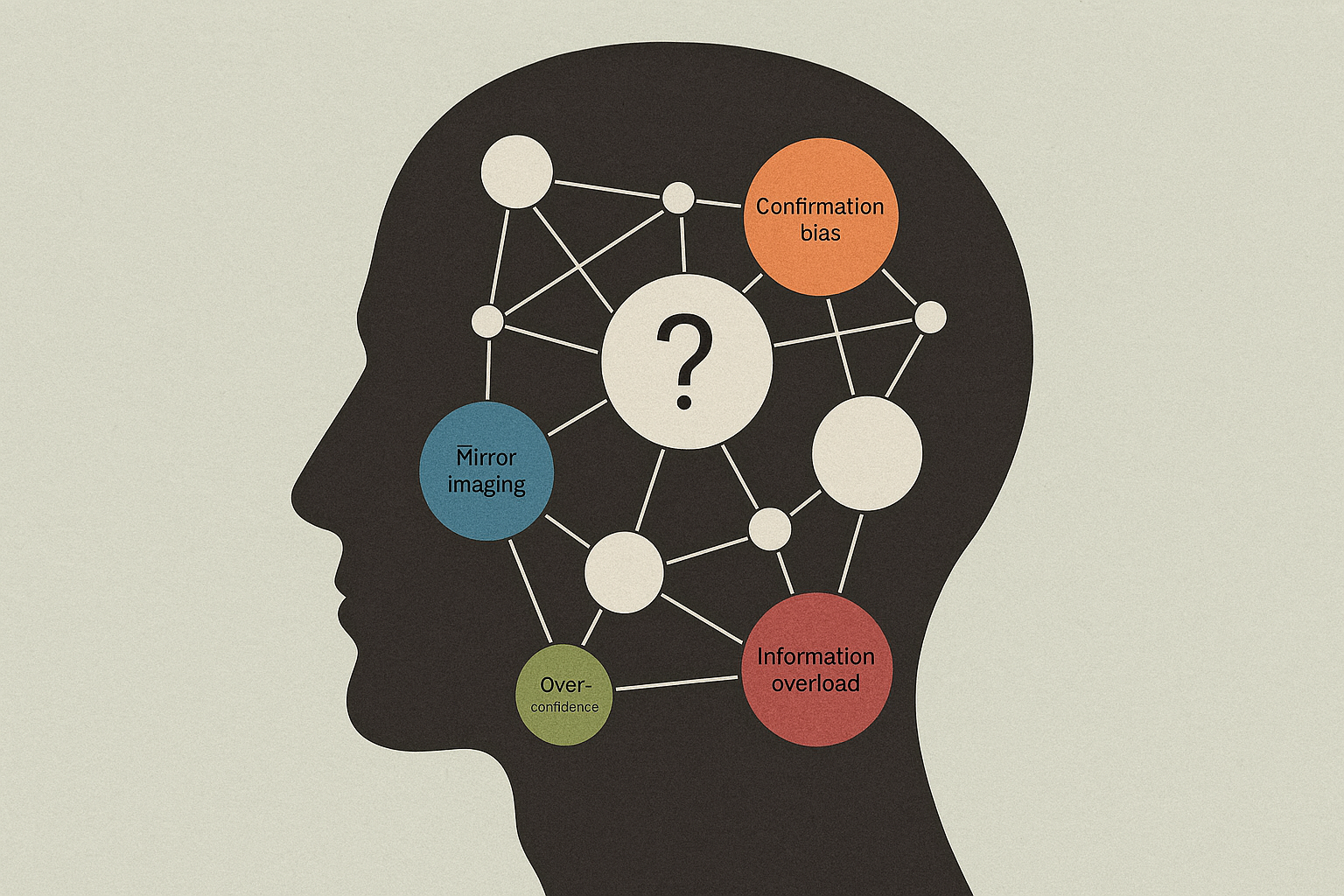Structured Analytic Techniques (SATs) emerged from the crucible of intelligence work, where decisions carry immense weight, shaping national security, influencing foreign policy, and anticipating threats. Developed by agencies like the CIA and honed through decades of tradecraft, SATs were designed to combat cognitive biases, enforce analytical rigor, and produce judgments that withstand scrutiny. Techniques such as hypothesis testing, adversarial analysis, and scenario planning became staples of intelligence professionals navigating uncertainty and complexity.
But what if these same tools, once reserved for assessing nuclear risk or countering cyberattacks, could help you in making everyday decisions?
Why Everyday Decisions Go Wrong
In our daily lives, we face a barrage of decisions, some trivial, others life-altering. Yet we often make them under stress, emotion, or incomplete information. Our brains, wired for efficiency, rely on shortcuts that can distort judgment:
Confirmation bias leads us to favor information that supports our beliefs
Mirror imaging makes us assume others think like we do
Overconfidence blinds us to uncertainty
Information overload paralyzes decision-making
Whether it’s choosing a school for your child, deciding when to retire, or navigating a relationship conflict, these biases quietly sabotage our reasoning. We trust our gut, lean on past experience, or follow the crowd, often unaware of how fragile our thought process really is.
SATs as a Remedy for Cognitive Chaos
Structured Analytic Techniques offer a powerful antidote. They don’t replace intuition—they refine it. By imposing structure on how we think, SATs help individuals:
Break down complex problems
Evaluate competing options
Anticipate failure points
See from alternative perspectives
In essence, SATs bring the discipline of intelligence analysis to the unpredictability of everyday life. They transform decision-making from a reactive impulse into a deliberate, transparent process.
Categories of Structured Analytic Techniques (SATs)
Structured Analytic Techniques fall into five broad categories; each tailored to a specific analytic need:
Category | Purpose | Example Techniques |
|---|---|---|
Diagnostic | Evaluate competing hypotheses | Analysis of Competing Hypotheses (ACH), Key Assumptions Check |
Contrarian | Challenge prevailing views | Devil’s Advocacy, Red Team Analysis |
Imaginative | Explore alternative futures | Brainstorming, Scenarios, Premortem Analysis |
Structuring | Organize complex information | Chronologies, Timelines, Link Analysis |
Decision Support | Aid policy or operational decisions | Force Field Analysis, Decision Trees |
How These Categories Work in Practice
Diagnostic techniques help avoid premature conclusions by rigorously testing multiple hypotheses.
Contrarian methods inject dissenting perspectives to challenge groupthink and uncover blind spots.
Imaginative tools foster creativity and foresight, preparing for unexpected outcomes.
Structuring techniques bring order to chaos, making sense of large volumes of data.
Decision support tools guide choices by mapping out forces, consequences, and trade-offs.
Key Techniques Explained
1. Analysis of Competing Hypotheses (ACH): Choosing Between Life Paths
ACH is a structured method for weighing multiple options by systematically comparing evidence against each. Rather than rushing to a conclusion, you test each possibility against the facts. The outcome? A choice rooted in consistency, not convenience.
2. Key Assumptions Check: Planning for the Future
This technique surfaces and scrutinizes the assumptions that underpin your plans. Ask yourself: “What must be true for this to succeed?” By challenging these assumptions, you uncover hidden vulnerabilities and build a more resilient strategy.
3. Red Team Analysis: Understanding Others
Red Teaming invites you to adopt an adversarial or alternative viewpoint to challenge your own thinking. Stepping into another’s shoes reveals blind spots, fosters empathy, and leads to more balanced outcomes.
4. Scenarios and Premortem Analysis: Preparing for Uncertainty
These imaginative techniques help you anticipate future possibilities and identify failure points before they happen. By asking “What could go wrong?” and envisioning multiple scenarios, you build foresight, strengthen contingency plans, and reduce the sting of surprise.
Final Thoughts
Structured Analytic Techniques were forged in the world of espionage and strategy, but their true power lies in their universality. In an age of complexity, distraction, and emotional decision-making, SATs offer a way to reclaim clarity. They help us slow down, think critically, and make choices that are not only smarter but more intentional.
From the war rooms of intelligence agencies to the living rooms of everyday life, SATs prove that rigorous thinking isn’t just for analysts, it’s for anyone seeking mastery over their decisions. By adopting these techniques, we don’t just make better choices, we become better thinkers.
Resource
A Tradecraft Primer: Structured Analytic Techinques for Improving Intelligence Analysis
